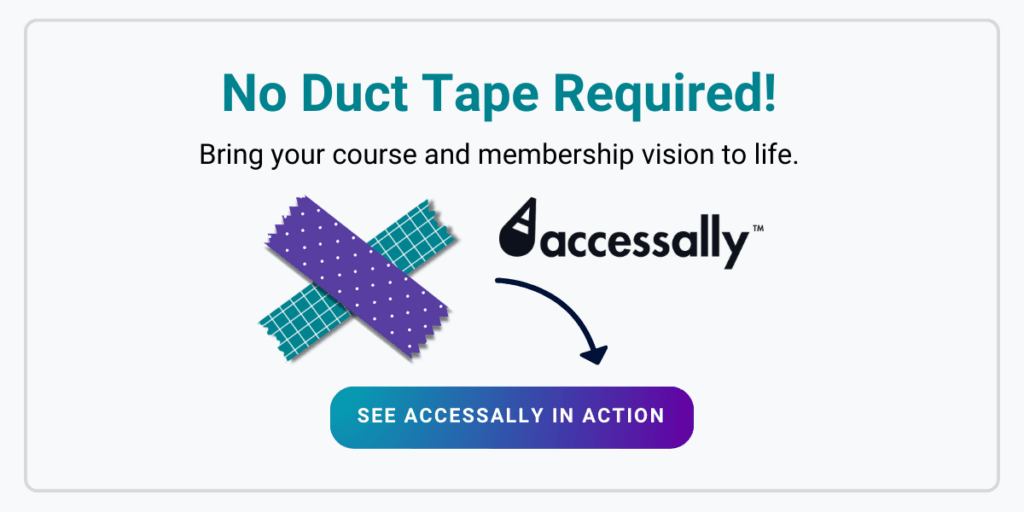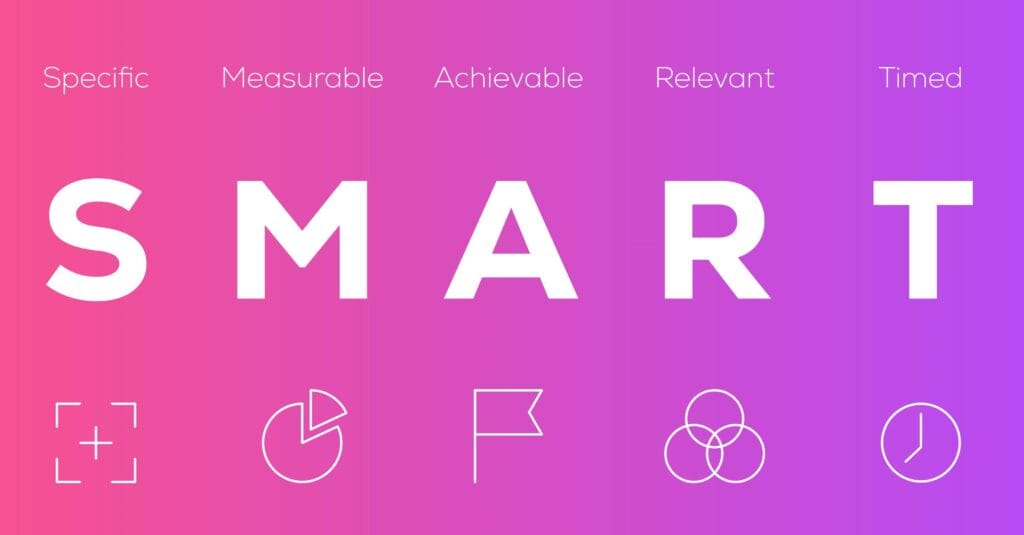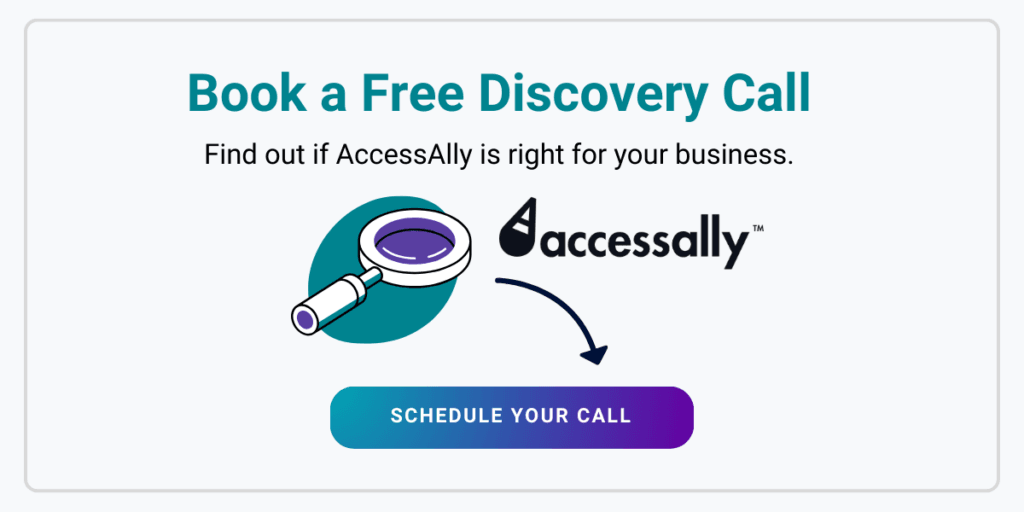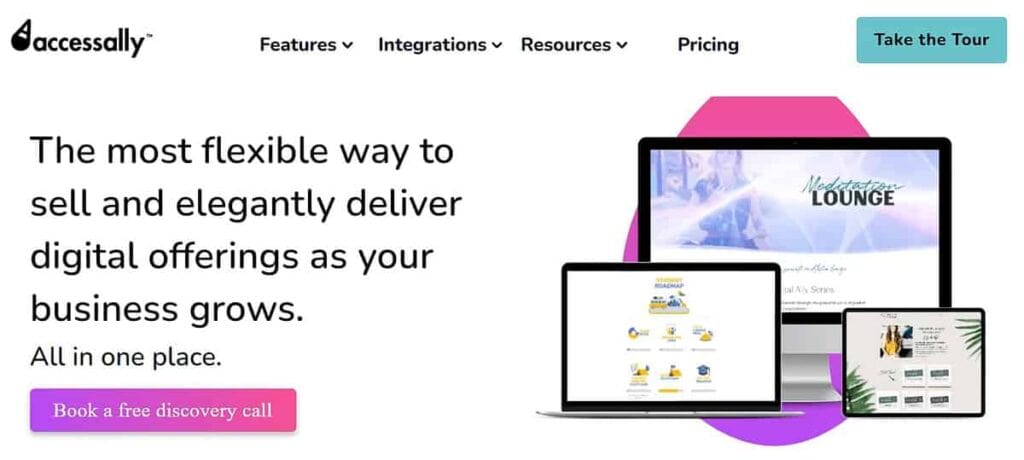Do you want to boost the success of your online course, increase knowledge retention, save time and money, and enhance revenue?
Crafting a successful eLearning course that achieves all of this is possible, but it requires thought and careful planning. Unlike a course in a traditional setting of a classroom, eLearning courses must be structured and planned slightly differently.
No course creator wants to put in all their time, money, and expertise only to end up with it underperforming.
By focusing on elements such as the demographics of your audience, defining learning objectives, and choosing the most effective platform, as well as other key areas, you will put yourself on the road to course creation success.
Whether you’re looking for more students, better engagement, or increased revenue, these 8 steps will help you to design, develop, and maintain a successful online course.
Why create an eLearning course?
Within education and training, eLearning has been a game changer in many ways.
The rise of eLearning platforms has opened up new avenues for sharing knowledge, upskilling employees, and generating revenue for teachers and educators.
Professionals within their fields can share valuable knowledge with ease, which is why creating an eLearning course has become such a popular decision.
Other benefits of creating an eLearning course include:
- Accessibility and convenience: eLearning courses break down geographical barriers, allowing learners from remote locations and those with mobility issues to access educational content with ease. The accessibility of online courses promotes inclusivity, making learning a more level playing field.
- Cost-effective solution: Traditional learning methods often involve significant expenses, such as maintaining physical classrooms, covering travel costs, and producing printed materials. eLearning eliminates many of these overheads, providing a cost-effective alternative for organizations looking to train their workforce efficiently.
- Scalability: Whether you’re a small business or a large corporation, eLearning offers scalability. You can effortlessly accommodate a substantial number of learners without the constraints of physical space or resources.
Although immensely popular among individuals, eLearning is also a valuable tool for businesses. Online courses can help your business to stay up to date with the latest industry trends and practices. Businesses can also benefit from eLearning because:
- Employees who are offered training and developmental opportunities are more likely to remain in their jobs, as it boosts productivity and improves job satisfaction.
- Individuals can use eLearning to enhance their skills, pursue personal interests, or achieve career aspirations.
- The flexibility of online courses enables continuous learning, allowing individuals to stay relevant and competitive in their chosen fields.
- Beyond education and upskilling, eLearning courses have significant commercial value. Course creators can generate revenue through sales, tapping into a growing market. Projections indicate a Compound Annual Growth Rate (CAGR) of 9.48% for the online education market from 2023 to 2027. This presents a promising opportunity for both entrepreneurs and organizations.


8 simple steps to create the perfect eLearning course
Let’s now go through the tools you need to create an engaging and effective eLearning experience for your students or employees.
From defining and understanding your audience to choosing the perfect eLearning platform, this step-by-step guide will help you create your online course.
1. Understand your audience
Before embarking on the journey of creating an impactful eLearning course, it’s essential to lay the groundwork by understanding your audience. Here’s how:
- Identify your target audience: The first step is to precisely identify the demographic and psychographic characteristics of your prospective learners. Factors such as age, educational background, professional experience, and specific learning needs play a pivotal role in shaping your course’s design.
- Recognize learning needs: One of the key aspects to consider here is the diversity of learning styles, including visual, auditory, kinesthetic, and reading/writing. Understanding these styles is crucial because it provides profound insights into why individuals may be inclined to take your course and what they aspire to achieve through it.
- Aligning objectives with aspirations: Gain clarity on the motivations that drive your audience to seek out your course. By understanding their objectives, you can strategically align your course objectives and content with their aspirations.
Understanding your audience goes beyond demographics; it’s about customizing your course content to meet their unique needs, ensuring effectiveness and engagement.
By incorporating real-life examples or case studies relevant to your audience, you can make your course content relatable and practical.
It helps learners connect theoretical knowledge to real-world scenarios, enhancing comprehension and retention.
Along with this, understanding and offering flexibility is crucial.
Recognizing that different learners have varying paces helps to create a comfortable learning environment.
Self-paced modules, for instance, allow individuals to progress through the material at their own speed.
By adapting your course content based on your audience’s profile and preferences, you create an environment where learners feel their needs are met, resulting in greater engagement and ensuring that the knowledge you’re sharing resonates on a personal level.
This adaptability is key to crafting an eLearning course that leaves a lasting impact.
2. Define learning objectives
Learning objectives are used within education to help your students achieve certain levels of understanding.
They are short statements that offer information to the students as to what they should be able to do or know after they have completed the lesson.
Think of them as a guide for both the instructors and learners.
Their importance resonates throughout the course development journey, influencing various areas of the eLearning experience and offering:
- Enhanced clarity and focus: Learning objectives provide clear direction, ensuring that both instructors and learners understand the course’s purpose and expected outcomes.
- Improved course design: Learning objectives shape the course’s structure and content. They help in deciding what topics to cover, how to sequence them, and which resources to incorporate, ensuring a well-structured course.
- Streamlined assessment: Assessments become more meaningful when aligned with learning objectives. They enable you to evaluate whether learners have achieved the desired knowledge or skills effectively.
- A motivational boost: Clearly defined objectives motivate learners by demonstrating the relevance and value of the course content. When learners know what to expect and why it’s important, they are more likely to stay engaged and committed.
Learning objectives offer a feedback loop. They help instructors gauge whether learners are progressing as intended and whether adjustments are needed.
Creating effective learning objectives involves making them SMART (Specific, Measurable, Achievable, Relevant, Timed). This framework ensures that objectives are clear, quantifiable, and attainable.


3. Understand the role of stakeholders and subject matter experts
In any eLearning project, stakeholders can include a range of individuals or groups, including clients, sponsors, administrators, learners, and instructional designers.
Their collective interest in the course’s outcome makes their involvement invaluable.
Stakeholders offer diverse perspectives that can greatly influence the course’s direction. They provide insights into organizational needs, industry trends, and learner expectations.
Aligning the course with these insights ensures it meets both organizational goals and learner needs.
Effective stakeholder engagement isn’t just beneficial – it’s essential.
Encouraging them to actively participate in the planning and decision-making phases and provide feedback during development and testing stages is key to course success.
Clear and open communication among stakeholders forms the bedrock of a productive collaboration.
AccessAlly simplifies this process by granting stakeholders access to student progress dashboards, fostering transparency and informed decision-making.
Subject Matter Experts (SMEs) also play a critical role in ensuring the course’s content is accurate, relevant, and credible.
Their expertise brings real-world insights, data, and examples to the course, enriching its quality.
Effective communication and feedback loops between SMEs and course creators are instrumental in the smooth development of course content.
4. Choose the right eLearning platform
The choice of which eLearning platform is the right one for you is an important decision to make, as it forms the foundations of your course’s functionality and user experience.
To make an informed decision, think about these factors:
- Features: Thoroughly examine the platform, focusing on its course creation tools, interactivity options, scalability potential, content management capabilities, and opportunities for monetization.
- Usability: An intuitive, user-friendly interface is essential. Ensure the platform is accessible and mobile-responsive, providing a learning experience for all participants.
- Compatibility: Assess how well the eLearning platform integrates with your existing tools and systems, such as your website, CMS, email platform, and workflow automation tools.
- Support: The availability of extensive documentation and responsive customer support is vital. Prompt resolution of queries and challenges can significantly impact the course development process.
- Pricing: Be vigilant about pricing structures and potential hidden costs. This includes setup fees, maintenance charges, or additional fees for advanced features.
There is a wide range of eLearning platforms available, each with its unique strengths. Options like TalentLMS, Absorb LMS, and Udemy Business cater to various needs and preferences.
AccessAlly is a comprehensive eLearning platform that specializes in course creation, management, and sales.
What sets AccessAlly apart is its commitment to adaptability and scalability.
As your business evolves, AccessAlly evolves with you, making it a cost-effective, long-term solution.


5. Develop a comprehensive course outline with AccessAlly
A well-structured course outline is essential for effective learning because:
- It helps learners understand the course’s scope, sequence, and expectations.
- It reduces the cognitive load on learners.
- It makes it easier for students to process information, build upon their knowledge gradually, and retain what they’ve learned.
- It ensures content flows smoothly from one concept to the next. This enhances comprehension and retention as learners can see the connections between topics.
In order to create a comprehensive course outline, make sure you begin by breaking down your course content into modules.
Modules are like chapters in a book, each focusing on a specific topic or theme.
Arrange modules with broader topics at the top and subtopics beneath them. This creates a clear structure for your course.
Once you have done this, each module should have a clear and concise title that reflects its content. Specify the assessments and activities for each module, which could include quizzes, assignments, discussions, or interactive exercises.
AccessAlly offers a flexible course builder that allows you to design the learning environment you want. Its features include:
- Module templates: AccessAlly enables you to create module templates that suit different types of learning content. For example, you can have templates for video-based lessons, interactive quizzes, discussion forums, and more.
- Customization: Customize each module template to match the content and style of your course. This flexibility ensures that your course meets your specific instructional goals.
- Sequential progression: You can use AccessAlly to set up a sequential progression, ensuring that learners move from one module to the next only when they have completed the previous one. This enforces the logical and sequential structure of your course.
- Integration: AccessAlly integrates with various other tools, such as email marketing platforms, membership sites, and payment gateways, making it easier to manage the entire course experience.


Creating a course outline with a tool like AccessAlly involves careful planning and organization. This flexible course builder allows you to design and deliver your content efficiently.
6. Design assessment and feedback mechanisms
Incorporating well-designed assessments and feedback mechanisms into online courses is crucial for several reasons, such as:
- Measuring understanding: Assessments help course creators gauge whether learners have understood the course material. They provide a quantifiable measure of knowledge retention and comprehension.
- Skill development: Assessments can evaluate not just knowledge but also the development of practical skills. They allow learners to apply what they’ve learned in a real-world context.
- Engagement: Well-crafted assessments can enhance learner engagement. They break up the monotony of passive learning and encourage active participation.
- Motivation: Assessments can serve as motivators by giving learners a sense of accomplishment and progress as they complete modules and assessments.
- Feedback: Feedback is extremely important. It helps learners understand their mistakes, correct them, clarify complex topics, and continuously improve their performance.
Course creators have a variety of assessment types to choose from, depending on their learning objectives and the content.
For example, some may favor mini module quizzes, while others might like to use essays.
No matter what form of assessment you choose, without feedback, it renders the tasks pointless.
Feedback is a vital component of the learning process. Ways course creators can provide feedback to learners include:
- Coaching portals: Coaching portals, such as those offered by AccessAlly, enable one-on-one feedback between learners and coaches. Learners can submit assignments or questions, and coaches can provide personalized feedback and guidance.
- Membership forums: Membership forums where learners can engage with each other, seek help, discuss course content, and collaborate on assignments are also important. This peer interaction can enhance learning and provide valuable feedback.
7. Design engaging learning activities
Learner engagement is a critical factor in the success of eLearning courses. Engaged learners are more likely to have positive learning outcomes, such as:
- Active learning: Learners who are engaged are typically active participants in lessons. They are more likely to ask questions, seek clarification, and take ownership of their learning.
- Knowledge retention: When learners are engaged, they are more likely to retain the information they’ve learned. Active participation helps solidify concepts in memory.
- Completion rates: Engaged learners are more likely to complete the course. High completion rates indicate that learners are motivated and finding value in the content.
- Overall satisfaction: If your learners are engaged, they are far more likely to recommend a course to others and view it as a worthwhile investment of their time.
Interactive features in eLearning can also significantly boost learner engagement. Research has shown that interactive elements can lead to substantial increases in page views and time spent on a website.
Learners are naturally drawn to activities that involve them actively in the learning process, which is why gamification has grown in popularity.
Gamification is the use of game elements and principles in non-game contexts to make learning more fun and engaging.
It uses elements like competition, rewards, and achievement to motivate learners, enhancing the eLearning experience by:
- Offering real-time feedback.
- Increasing student productivity as it often encourages learners to complete more tasks.
- Personalizing the learner experience.
- Promoting healthy competition, which can motivate learners to perform better and stay engaged.
Some interactive and gamification elements that can be incorporated into eLearning courses include:
- Points and scoring: Assign points for completing course activities.
- Badges and achievements: Award badges for completing modules, quizzes, or achieving specific milestones.
- Progress bars and dashboards: Visualize learner progress and goals.
- Choose your own adventure: Create interactive scenarios for engaging content.
- Surprises and prizes: Use rewards and prizes to keep learners motivated.
Learner engagement is crucial for the success of eLearning courses, and interactive features and gamification can significantly enhance engagement. AccessAlly provides a range of gamification elements to make learning fun, engaging, and effective.
8. Publish and promote your new eLearning course
Creating and publishing an eLearning course with AccessAlly involves several key steps:
- Create a course mockup: Before you start building your course, create a mockup or outline of the course structure. Determine the modules, lessons, assessments, and any interactive elements you want to include.
- Use a template or start from scratch: AccessAlly offers the flexibility to use pre-designed templates for your course content or start from scratch if you prefer a custom approach.
- Build course content: You can add text, videos, images, quizzes, assignments, and more. Organize the content logically based on your course outline.
- Add registration forms: Implement registration forms to capture information from learners who want to enroll in your course. AccessAlly allows you to customize these forms to collect specific data.
- Link content with automation: Set up automation rules to link course content. For example, learners who complete one module may automatically gain access to the next one.
- Test it: Before publishing, thoroughly test your course to ensure all elements work as intended. Check for any technical issues or content errors.
- Publish: Once you’re confident in your course’s functionality, you can publish it for your learners to access.
When you have finished your course, you will need to promote it. Promotion is essential to reach your target audience and maximize course enrollment.
Social media marketing, email marketing and automation, SEO content marketing, and affiliate programs are just a few examples of ways to promote your course.
Remember that effective promotion requires you to be consistent and strategic.
Combine multiple methods to reach a broader audience and tailor your promotional efforts to the unique characteristics of your target learners.
Next steps: Feedback monitoring and continuous course improvement
Feedback is a vital component of course development and improvement. It provides valuable insights into what’s working well and what needs adjustment.
Feedback offers a glimpse into the learner’s perspective and helps you understand their experience, including what they find engaging, challenging, or confusing.
Along with this, feedback also helps to uncover any issues the learner may have and help you to resolve the issue.
You can collect feedback from learners in a number of ways, such as:
- Surveys: Create online surveys using tools like Google Forms. Ask open-ended questions about learners’ overall experience, specific modules, and suggestions for improvement.
- Quizzes: Insert feedback questions at the end of course modules or lessons. Multiple-choice or rating scale questions can quickly gauge learner satisfaction and understanding.
- Direct communication: Encourage learners to reach out directly through email or discussion forums. Create a culture of open communication where learners feel comfortable sharing their thoughts.
Once you’ve gathered feedback, it’s crucial to analyze it.
You can do this by identifying common themes and trends in your survey responses, or by grouping feedback into categories such as content, delivery, assessments, and resources – this particularly helps pinpoint areas that require attention.
Remember, feedback isn’t necessarily negative. It’s there to give you ideas for how you could improve your course for future learners.
Based on the feedback you get, you can make necessary adjustments to the course content, structure, or delivery methods.
Learners will feel heard, listened to, and engaged with when you ask them for their thoughts, so communicate with learners about the changes you’re making based on their feedback.
This shows that you value their input and are committed to improving their learning experience.
Take your eLearning course to the next level with AccessAlly
Creating a successful eLearning course is a process that involves careful planning, creating engaging content, implementing effective feedback mechanisms, and deploying promotion strategies.
The most successful of these courses use the tips we have outlined in this article, along with the best course builders that suit their budget and needs.
AccessAlly simplifies and enhances every step of this journey, from course creation and management to sales and engagement.
With these features, including gamification and interactivity, you can boost learner engagement and course completion rates.
Want to get started on your journey to a great eLearning course? Unlock your potential today by trying AccessAlly!




